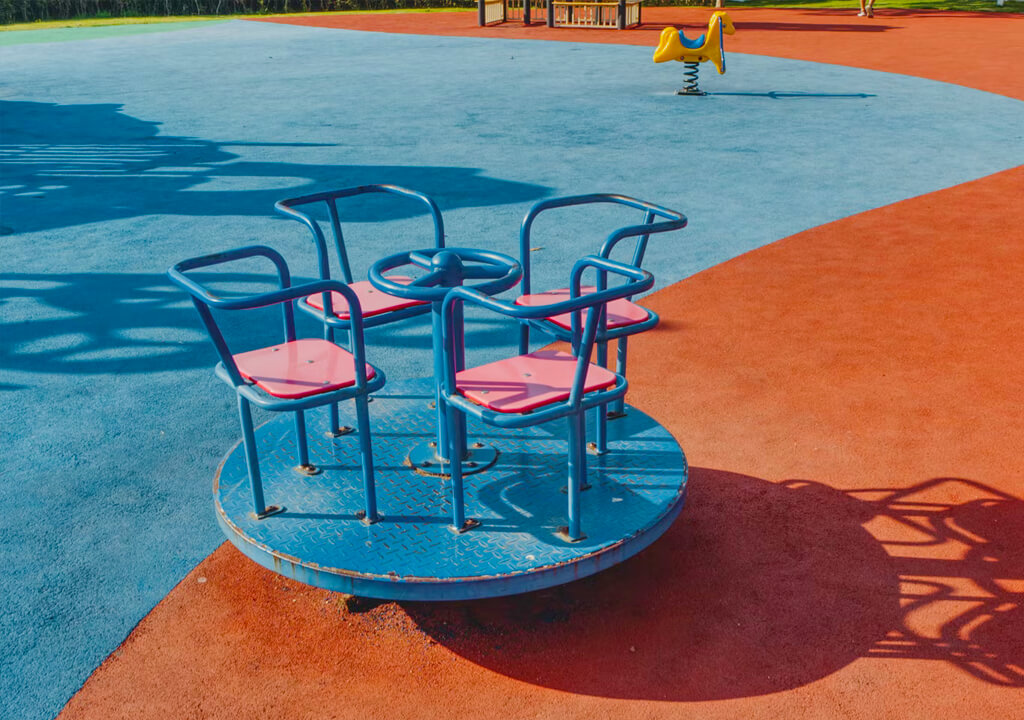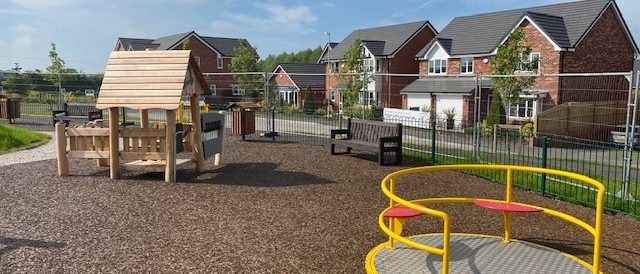Playground Maintenance Tips for Spring Cleaning
We’ve all felt those first tentative rays of sunshine over the last week or two. It’s therefore safe to say that spring is on its way! After a long cold winter, it’s what we’ve all been waiting for. However, you might be wondering what this means for your play area. You might be looking for advice or playground maintenance tips for spring cleaning of your outdoor area.
After all, playgrounds get considerably less use during the cold winter months as opposed to warmer months. Also, the change in the weather means your maintenance routine will likely need to be readapt too.
Once spring begins to set in, this means that there are only a few months left before your playground starts to get increased and heavy usage. Heavier footfall can mean equipment gets worn out faster. Therefore, it’s important to catch any repairs or replacements early in the spring. Before they become a problem in the summer.
The difference in weather can also affect your play area too. Playground surfaces can fare differently from season to season. Therefore, it’s important to be aware of any maintenance you need to do.

So what does spring mean for your playground maintenance, exactly? Based on our years of experience and expertise when it comes to play areas and safety surfacing, we would advise some small changes to your maintenance routine that will help transition from winter to spring, and leave you more prepared for summer. Read on to find out with our top playground maintenance tips:
Artificial Grass Maintenance
If your playground or recreational space has artificial grass installed, there may be some repairs you need to look out for after winter has passed. Whilst it is a lot more resilient than normal grass, changes in weather conditions can impact your artificial turf, so here are some things we’d advise you to look out for.
Damage caused by frost
Ideally, we’d advise that people avoid walking or playing on artificial grass when it’s frosty. This is because the grass blades stiffen, and if especially frozen over, you can damage your turf by walking on it during this weather. Therefore, come spring, you should be checking your artificial turf for any damages that may have been caused by winter frosts. This way, you can fix any slightly damaged grass before the heavy footfall traffic in summer, which will only exacerbate the problem.
Debris build-up

Any stray debris or piles of leaves are easy to accumulate over the winter months. Unfortunately, this can cause problems when it comes to your turf’s drainage. Artificial grass uses specially-installed drainage holes to prevent water from pooling up and causing blockage. However, debris buildup can cover these holes and cause blocks or floods.
As the weather starts to warm up, keep an eye on any leftover debris and remove it promptly to avoid covering your drainage holes. Remember not to use a rake, either, as this risks uprooting the grass from its installation.
Playground Equipment
Playground equipment is an integral part of the play experience; it can serve as the foundation for children’s imaginations and provides props for creative games. Therefore, it is important to keep on top of the playground maintenance required to keep the equipment in good standing.
Paint Checks
During the harsher winter months, the paintwork on your playground equipment can take a beating. Snow, rain, ice, frost and so on can all contribute to paint being damaged, peeling, or chipped away. Spring presents the perfect opportunity to make any repairs needed before a small job turns into a larger-scale maintenance requirement.
Repair Checks
A lot of UK winters get too cold for children to play outside comfortably, so chances are your playground equipment got a lot less use than usual. This could mean that repairs go unnoticed, and can even be made worse through exposure to the elements. You should check thoroughly for any cracks, rips, splits or splinters in your equipment, and take the relevant steps to rectify any damages.

Play Surfacing Check-ups
If you have a loose fill or wet pour surfacing, these are easily maintainable, but still need checking from time to time. The earlier you catch any issues the better, before these turn into more expensive jobs.
JungleMulch/Rubber Mulch Maintenance
Luckily, rubber mulch fillings are usually pretty easy to maintain. However, we know that maintenance can drop slightly in the colder months. So by the time spring rolls around, ensure you give your playground surface a thorough clean. We would advise occasionally using a low-pressure hose with warm water on your surfacing, This helps wash dirt through to the base and away from the surface. Additionally, keep an eye out for any pesky weeds peeking through in the spring, and try and remove them before they fully take root.
RubbaSmart/Wet Pour Playground Maintenance Tips
We recommend sweeping your wet pour surface regularly to remove any grime or debris buildup. You can also use the same low pressure cleaning method we mentioned above on wet pour in order to keep it looking nice and tidy.

We hope this article has given you some guidance about how best to look after your playground come springtime. However, we have tons more advice for you! Keep an eye on our socials for regular blogs and posts, and in the meantime, feel free to use the contact form below for anything else we can answer or help you with!



